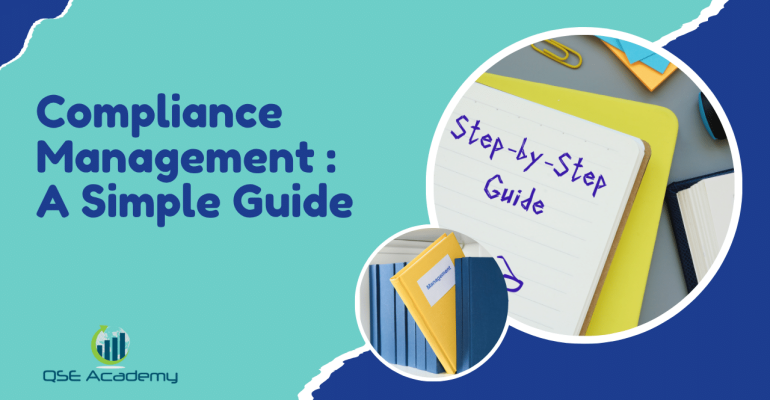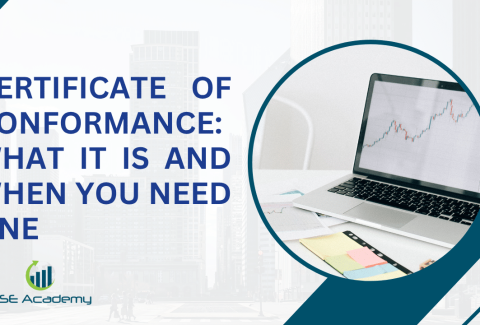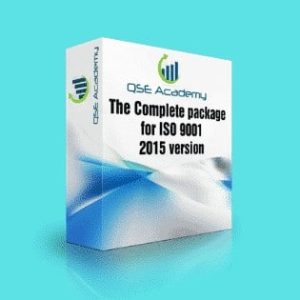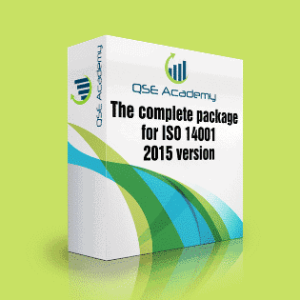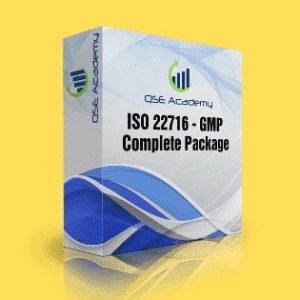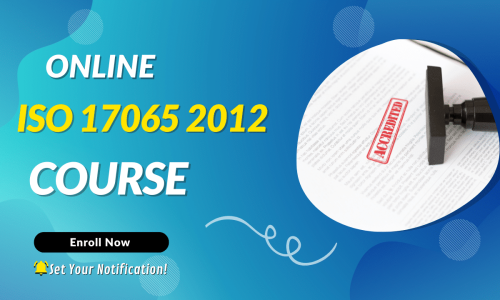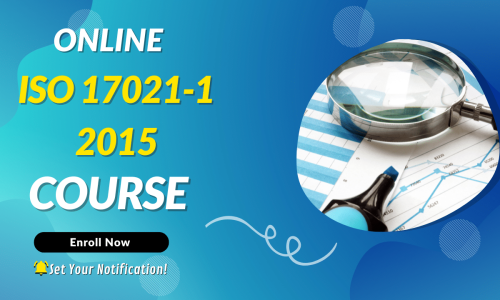Compliance Management : A Simple Guide
Last Updated on October 13, 2025 by Hafsa J.
Compliance Management : A Simple Guide
Compliance management is the structured approach organizations use to ensure they meet legal, regulatory, and internal standards. At its core, compliance management is about staying aligned with the rules that govern your operations—whether they come from government regulations, industry standards, or your own company policies.
Across industries, compliance management plays a critical role in reducing risk, avoiding penalties, and protecting reputation. Whether you’re in manufacturing, healthcare, finance, or any regulated field, failing to manage compliance effectively can lead to serious consequences.
This article offers a clear and practical breakdown of compliance management. We’ll walk you through what it is, how it works, the systems and tools involved, and how to build a strong, scalable program. If you’re looking to simplify compliance without cutting corners, this guide is for you.
What Is Compliance Management?
Core Definition and Purpose
Compliance management is the structured process of ensuring an organization consistently meets external regulations, internal policies, and ethical standards. It’s about creating systems that keep your business operations aligned with legal and regulatory expectations—before issues arise.
At a basic level, compliance management serves two key purposes:
-
Preventing violations of laws and policies
-
Promoting a culture of integrity and accountability
When compliance management is done right, it becomes more than a checklist. It acts as a proactive safeguard that helps organizations operate efficiently while avoiding legal risks and reputational harm. Whether you’re handling data privacy, workplace safety, or industry-specific laws, having a clear compliance management process in place makes all the difference.
Legal and Regulatory Drivers Behind Compliance
Every organization, regardless of its size or industry, is subject to some form of regulation. Compliance management ensures these rules are understood, followed, and documented properly.
Some of the most common drivers that shape compliance management include:
-
Government regulations like GDPR, HIPAA, or OSHA
-
Industry-specific mandates such as financial reporting or food safety standards
-
Internal company codes of conduct and ethics
In each case, compliance management acts as the bridge between regulation and real-world operations. It’s not just about avoiding fines—it’s about building trust with customers, stakeholders, and regulatory bodies alike.
Key Elements of Compliance Management Systems
Policy Development and Documentation
One of the first pillars of effective compliance management is clear, well-documented policies. These are not just formalities—they are the foundation that guides employee behavior and decision-making.
Policies should:
-
Reflect applicable laws, standards, and industry practices
-
Be written in simple, understandable language
-
Include procedures for routine tasks and exceptional situations
A strong compliance management system ensures these documents are reviewed regularly and kept up to date. Without a policy framework, it’s nearly impossible to enforce consistent compliance across departments.
Risk Identification and Control
A key part of compliance management is understanding where your risks lie. This involves identifying potential legal, operational, and reputational risks and putting controls in place to reduce them.
This step should include:
-
Risk assessments tied to regulatory requirements
-
Prioritization of high-impact areas
-
Implementation of preventive and corrective controls
By actively managing these risks, compliance management shifts from being reactive to proactive—helping organizations stay ahead of issues rather than scrambling after a violation occurs.
Roles, Responsibilities, and Oversight
Everyone has a part to play in compliance management. From frontline workers to executives, responsibilities should be clearly defined and aligned with each person’s role.
Your system should define:
-
Who is accountable for each compliance area
-
Reporting lines and escalation protocols
-
Oversight roles such as compliance officers or internal auditors
This clarity ensures that compliance management is not siloed or treated as someone else’s job. It becomes a shared responsibility embedded throughout the organization.
Common Frameworks for Compliance Management
ISO Standards (e.g., ISO 37301, ISO 19600)
When building a structured compliance management system, many organizations turn to internationally recognized frameworks like ISO standards. Two key ones are ISO 37301 and its predecessor ISO 19600. These standards provide a universal language and structure for managing compliance effectively.
Key features include:
-
A risk-based approach to compliance
-
Integration with existing management systems (such as QMS or EMS)
-
Emphasis on leadership, accountability, and continual improvement
Using ISO standards helps align your compliance management system with global best practices. It’s a practical way to ensure your methods are not only effective but also recognized by regulators and stakeholders worldwide.
Industry-Specific Models and Regulations
While ISO offers a flexible framework, some industries require more specialized models for compliance management. For example:
-
Financial institutions follow frameworks tied to anti-money laundering and financial reporting.
-
Healthcare organizations must adhere to HIPAA or equivalent local privacy laws.
-
Food manufacturers may need to align with GFSI-recognized standards or HACCP requirements.
In each case, the foundation remains the same: a well-structured compliance management system ensures these unique regulations are met consistently and confidently.
These frameworks, whether broad or niche, offer practical tools to help organizations embed compliance management into their everyday processes—making it a seamless part of how business is done.
The Compliance Management Lifecycle
Planning and Assessment
Every effective compliance management system starts with a structured plan. This phase lays the groundwork by identifying what regulations apply, what internal policies are needed, and what risks must be addressed.
During the planning stage, organizations should:
-
Conduct a regulatory gap analysis
-
Identify compliance objectives
-
Map current processes against applicable requirements
Assessment follows closely, allowing teams to evaluate how well current practices align with desired standards. Without this critical step, compliance management can lack direction and miss essential risks.
Implementation and Monitoring
Once plans are in place, the next step is putting them into action. Implementation means rolling out policies, training employees, and activating internal controls. But the work doesn’t stop there—monitoring is key.
Good compliance management includes:
-
Setting up measurable checkpoints
-
Using software to track compliance tasks
-
Assigning clear responsibilities
Regular monitoring helps detect gaps early and keeps your organization alert and responsive, rather than reactive.
Reporting and Continuous Improvement
A robust compliance management cycle ends with clear, consistent reporting. This involves documenting findings, sharing insights with leadership, and deciding on next steps for improvement.
It’s not just about ticking boxes—it’s about using data to refine your compliance approach over time. Continuous improvement means:
-
Updating procedures based on audit results
-
Responding to regulatory changes
-
Encouraging feedback from internal teams
When the full cycle of compliance management is practiced regularly, organizations not only stay in line with rules—they build a culture of responsibility and foresight.
Compliance Management in Daily Operations
Integration with Quality and Safety Systems
To be truly effective, compliance management must be embedded into everyday operations—not treated as a one-time project. One of the best ways to do this is by integrating compliance with quality and safety management systems. When these systems work in harmony, compliance becomes a seamless part of how work gets done.
For example:
-
Standard operating procedures can align with compliance checks.
-
Safety audits can include compliance questions.
-
Quality reviews can trigger updates in compliance documentation.
By weaving compliance management into existing workflows, you reduce the risk of oversight and make compliance feel like a normal, manageable part of the job—not an extra burden.
Training and Employee Awareness
People are central to compliance management. If employees don’t understand what’s expected or why certain rules matter, even the best system will fall short. That’s why training and awareness are essential.
Key strategies include:
-
Regular training sessions focused on relevant laws and company policies
-
Easy-to-understand compliance guides
-
Visual cues and reminders in the workplace
When employees are trained to recognize nonconformities and act accordingly, compliance management moves from being reactive to proactive—and that’s when it really adds value.
Handling Nonconformities and Escalations
Even with strong systems in place, things can go wrong. Nonconformities—when something doesn’t meet a compliance requirement—need to be handled quickly and correctly. A responsive compliance management system should include:
-
Clear procedures for identifying and reporting issues
-
Defined escalation paths
-
Documentation of root cause and corrective action
The goal is not just to fix the issue, but to prevent it from recurring. When this becomes standard practice, compliance management supports long-term stability and trust across the organization.
Digital Tools for Compliance Management
Software Features That Matter
Modern organizations are turning to technology to strengthen their compliance management efforts. Manual systems can be time-consuming and prone to error, so digital tools are now a key part of staying on top of regulatory requirements.
When choosing software for compliance management, look for features that support:
-
Policy tracking and version control
-
Automated reminders for training or audits
-
Centralized documentation and secure access
-
Role-based permissions for oversight
These tools not only streamline tasks but also make it easier to demonstrate compliance during audits or reviews.
Automating Audits and Documentation
Automation is one of the most powerful advantages of digital compliance management systems. Instead of relying on spreadsheets or scattered files, automation ensures consistency and real-time updates.
Here’s how it helps:
-
Scheduled internal audits run more smoothly
-
Corrective actions are automatically logged and tracked
-
Reports can be generated instantly for regulators or management
By reducing manual work, automation allows compliance teams to focus on analysis, strategy, and ongoing improvement. As a result, compliance management becomes more efficient, reliable, and aligned with your organization’s goals.
Measuring Compliance Effectiveness
Key Performance Indicators
To ensure your compliance management system is not just in place—but actually working—you need to measure it. That’s where key performance indicators (KPIs) come in. These are specific metrics that help you evaluate how well your organization is following required rules and procedures.
Examples of useful compliance KPIs include:
-
Number of nonconformities identified during audits
-
Percentage of employees completing mandatory training on time
-
Time taken to close corrective actions
Tracking these numbers allows organizations to spot patterns, respond to weaknesses, and maintain a proactive approach to compliance management.
Internal Audit and Review Techniques
Regular internal audits are an essential part of measuring the health of any compliance management system. They provide an honest look at what’s working and what’s not. More importantly, they give you time to fix issues before an external auditor or regulator steps in.
Effective audits should be:
-
Structured using clear checklists or frameworks
-
Conducted by trained personnel or third-party experts
-
Followed up with reports, action items, and clear deadlines
These reviews help ensure your compliance management system stays aligned with current regulations and company policies. And when combined with KPIs, they give leadership the data needed to improve, adjust, or expand compliance activities over time.
Avoiding Pitfalls in Compliance Management
Misunderstanding the Scope
One of the most common mistakes in compliance management is assuming it only applies to legal departments or top executives. In reality, compliance touches every part of the organization—from frontline staff to senior leadership. When the scope is misunderstood, critical areas can be left unmonitored, leading to gaps in controls and missed obligations.
Clear communication and inclusive planning are essential to avoid this pitfall. Everyone should understand their role in maintaining compliance management across the company.
Overcomplication of Processes
Another trap organizations fall into is overcomplicating their compliance management structure. It might seem impressive to create lengthy procedures or complex tracking systems, but these often create confusion rather than clarity.
The better approach? Keep processes practical:
-
Use clear, concise policies
-
Implement tools that are user-friendly
-
Align documentation with actual day-to-day workflows
The more intuitive your compliance management system is, the easier it is for teams to stay aligned and engaged.
Compliance efforts can unravel quickly without proper records or traini
Inadequate Recordkeeping or Training
ng. Documentation is the backbone of any compliance management system—if you can’t prove it, it didn’t happen. Equally important is ensuring that staff are well-trained and understand why compliance matters.
Solid recordkeeping supports audits, legal defense, and internal reviews. Meanwhile, consistent training ensures everyone is equipped to act within compliance boundaries every single day. Both elements are non-negotiable pillars of reliable compliance management.
Compliance Management Best Practices
Keep It Scalable and Adaptable
An effective compliance management system should never be static. Regulations change. Business models evolve. What works for a team of twenty may not suit an enterprise of two hundred. That’s why scalability and adaptability are essential from day one.
To maintain flexible compliance management:
-
Build modular procedures that can grow with your business
-
Avoid overly rigid documentation that’s hard to update
-
Regularly review and revise your compliance framework
A scalable approach ensures your system won’t collapse under expansion or new regulatory demands.
Foster a Culture of Compliance
A strong compliance management system depends on more than rules—it depends on people. When employees understand the “why” behind compliance and feel personally responsible for upholding it, your system becomes more resilient.
Fostering this culture involves:
-
Open communication about standards and expectations
-
Recognizing and rewarding compliant behavior
-
Encouraging questions and continuous learning
By embedding compliance management into your everyday operations and mindset, you reduce the risk of violations and build a more accountable, ethical organization.
Conclusion: Why Compliance Management Deserves Your Focus
Compliance management isn’t just a box to check—it’s a structured, ongoing discipline that protects your organization, enhances trust, and ensures you’re operating within legal and ethical boundaries. Whether you’re running a small business or leading a global enterprise, having a solid compliance framework is critical.
Throughout this guide, we’ve unpacked what compliance management really means, how it functions in daily operations, and what tools and strategies can support it. From aligning with regulatory standards to building a culture of compliance, each part of the system plays a role in keeping your organization resilient and accountable.
In a world where regulations change quickly and stakeholder expectations grow higher, compliance management helps you stay ahead—clearly, consistently, and confidently. Now is the time to approach it with intention and make it a natural part of how your organization works every day.
Whether it’s ISO 9001, ISO 22000, or the cosmetics-focused ISO 22716, I’ve spent my career I’m not here to call myself an expert—I prefer “enthusiast” because I truly love what I do. When I’m not writing about standards, you’ll probably find me playing Piano 🎹, connecting with people, or diving into my next big project💫. I’m an engineer specialized in the food and agricultural industry
make ISO standards less intimidating and more approachable for everyone.
turning complex jargon into clear, actionable steps that businesses can actually use.
There’s something incredibly rewarding about helping people navigate food safety and quality management systems
in a way that feels simple, practical, and even enjoyable.
I have a Master’s in QHSE management and over 12 years of experience as a Quality Manager
I’ve helped more than 15 companies implement ISO 9001, ISO 22000, ISO 22716, GMP, and other standards
My clients include food producers, cosmetics manufacturers, laboratories, and service companies
I believe quality systems should be simple, useful, and efficient.

